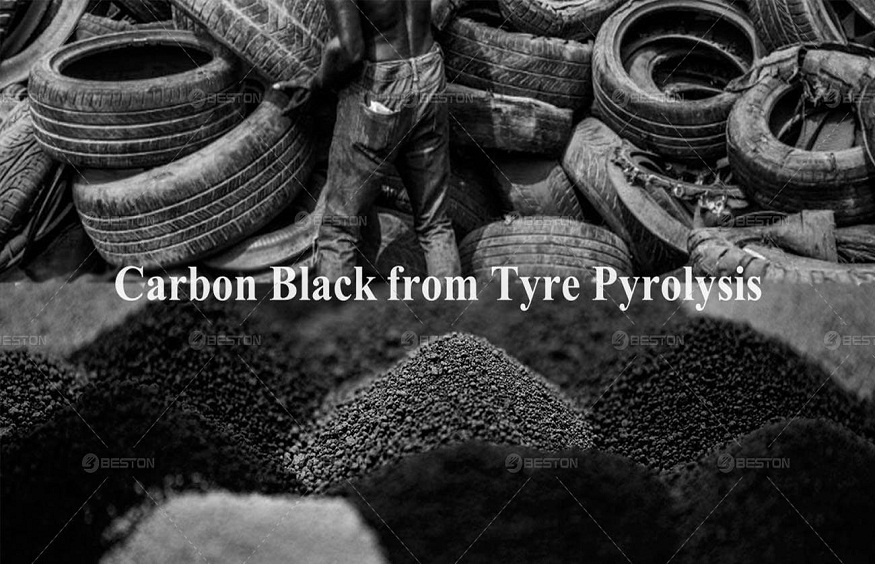The tyre production sector is changing significantly as the globe gives sustainability top priority. Derived from the pyrolysis of end-of-life tires, Pyrolytic Carbon Black (rCB) is becoming a game-changing material that not only satisfies performance criteria of contemporary tires but also fits with environmental aims. The use of pyrolytic carbon black in sustainable tyre manufacture, its wider consequences for sustainability solutions, and its worth as a raw material in the carbon black market are investigated in this article.
Knowing Pyrolytic Black
Pyrolysis: The Method
Under little oxygen, a process known as pyrolysis—a thermal breakdown—breaks down organic molecules at high temperatures. Within the framework of tire recycling, this process turns end-of-life tires into valuable commodities like solid wastes, gases, and oils. In tyre manufacture, the solid residue—referred to as recovered carbon black (rCB)—can replace conventional carbon black. This approach not only cuts waste but also recovers priceless resources that might otherwise contaminate the surroundings.
Features and Standards of Pyrolytic Carbon Black
The kind of tires handled and the particular parameters of the pyrolysis process might affect the quality of pyrolytic carbon black. High-quality rCB has characteristics of virgin carbon black including endurance and reinforcing power. Furthermore, developments in purification and activation methods have enhanced rCB’s performance qualities, thus appealing to producers looking for sustainable materials without sacrificing quality.
The Tire Production Sustainability Imperative
Environmental Issues and Guidelines
The environmental effect of tires comes under more and more criticism. Given the approximately 1.5 billion tires manufactured annually worldwide, end-of- life treatment of these goods presents major difficulties. Landfilling tires cause environmental problems including greenhouse gas emissions and leachate pollution. Tyre makers are driven to use more sustainable methods as governments tighten rules on emissions and waste management.
Recovered Carbon Black: Their Function
Including recovered carbon black into tyre compositions helps producers reduce their dependence on fresh ingredients derived from fossil fuels. Using rCB will help businesses reduce their carbon footprint and support a circular economy wherein materials are re-used and waste is minimised. This change not only fits legal criteria but also attracts customers who care about the environment and choose sustainable goods.
Pyrolytic Carbon Black’s Economic Advantages
Cost-Effectiveness Against Virgin Carbon Black
Pyrolytic carbon black’s cost-effectiveness and Sustainability solutions for tyres are among its most convincing benefits. Because traditional carbon black manufacture mostly depends on fossil fuels, it is vulnerable to price swings connected to the state of oil availability. Since rCB is created from waste materials rather than raw petroleum products, it offers a more consistent price structure. Tyre companies may benefit from this consistency by having a consistent supply chain and lowering total manufacturing costs.
Improving Profit Margins via Environmentalism
Companies that use rCB into their products might improve their market position and profitability as customers want sustainable goods more and more. Manufacturers may draw environmentally concerned customers ready to pay a premium for sustainable solutions by promoting tires built with recovered carbon black as grebles. Among customers that give sustainability first priority, this strategy not only increases sales but also enhances brand loyalty.
Performance Characteristics in Tyre Manufacturing
Pyrolytic Carbon Black’s reinforcing qualities
Excellent reinforcing characteristics of pyrolytic carbon black are necessary for tyre performance. Key elements for guaranteeing safety and lifetime in tires, rCB improves tensile strength, abrasion resistance, and general durability when included into rubber formulations. Studies comparing rCB tires to conventional carbon black have demonstrated that sustainability does not have to mean sacrificing quality; rather, tires produced with rCB perform very similarly.
Enhancing Fuel Economy and Rolling Resistance
The possibility to increase rolling resistance of pyrolytic carbon black adds even another important advantage for tyre manufacture. Better fuel economy for automobiles results from lower rolling resistance, therefore helping to lower greenhouse gas emissions during operation. Including rCB into tyre compositions becomes a tempting choice for improving general vehicle efficiency as automakers try to satisfy strict fuel economy requirements.
More Broadly Sustainable Solutions
Supporting Initiatives for Circular Economy
Adoption of pyrolytic carbon black fits more general circular economy projects aiming at waste reduction and optimal resource efficiency. Through pyrolysis, producers help to create a system wherein resources are continually utilised instead of thrown away by recycling end-of-life tires. This strategy promotes creativity in sectors and cooperation among stakeholders to create environmentally friendly solutions that help companies as well as the surroundings.
Advocating Renewable Energy Targets
Apart from creating important products like rCB, pyrolysis creates oils and gases rich in energy throughout the process. These byproducts help to support energy sustainability objectives by either being further refined into fuels or renewable energy sources. Companies may develop complete plans that concurrently handle many facets of sustainability by combining waste-to- energy solutions with material recovery techniques.
Advancements in Pyrolytic Carbon Black Technology
Developments in Pyrolysed Technology
Efforts at constant research and development focus on refining pyrolysis technologies to raise further efficiency and product quality. Advanced reactor designs and improved process parameters seek to maximise output while lowering energy usage throughout manufacturing. Scaling up the acceptance of pyrolytic carbon black across sectors depends much on these developments.
Investigating Novel Uses for Recovered Black
New uses beyond tyre manufacture are developing as the quality of recovered carbon black keeps becoming better. RCB is starting to be investigated as a functional filler or pigment by sectors including plastics, coatings, and building materials. Increasing the market for recycled carbon black would not only stimulate demand for environmentally friendly substitutes but also support circular economy ideas in other spheres.
Conclusion
A major first towards automobile sector sustainability is the use of pyrolytic carbon black into tyre manufacture. Manufacturers may create premium materials that satisfy performance criteria and lower environmental impact by using waste resources using creative techniques like pyrolysis.
Adopting recovered carbon black raw material will become more essential for businesses trying to stay competitive in a changing market environment as awareness of sustainability among customers and legislators both keeps rising. Accepting these developments not only improves the products but also helps with worldwide initiatives meant to slow down global warming and promote a more sustainable future for everybody.
Driven by the transforming possibilities of pyrolytic carbon black as both a raw material and a necessary component in developing environmentally friendly solutions that benefit companies and the earth both, the road towards sustainable tyre manufacture has well begun.









